94. Hypospadias - Global HELP
94. Hypospadias - Global HELP
94. Hypospadias - Global HELP
You also want an ePaper? Increase the reach of your titles
YUMPU automatically turns print PDFs into web optimized ePapers that Google loves.
548 <strong>Hypospadias</strong><br />
Glanular.....................Double Y Glanuloplasty (DYG)<br />
with mobile meatus<br />
Distal.....................Inverted Y Mathieu<br />
with no or superficial chordee<br />
<strong>Hypospadias</strong><br />
Proximal.....................Modified Thiersch<br />
with no or superficial chordee<br />
Proximal.....................Lateral Based Flap (LB)<br />
with deep chordee<br />
(A)<br />
(B)<br />
(C)<br />
Source: Hadidi AT, Azmy AF, eds. <strong>Hypospadias</strong> Surgery: An Illustrated Guide, 1st ed. Springer<br />
Verlag, 2004. Reproduced with kind permission of Springer Verlag.<br />
Figure <strong>94.</strong>13: Authors’ personal choice of operations.<br />
(A) (B) (C) (D) (E)<br />
(D)<br />
(E)<br />
(F)<br />
Source: Hadidi AT, Azmy AF, eds. <strong>Hypospadias</strong> Surgery, 2nd ed. Springer-Verlag, in press.<br />
Reproduced with kind permission of Springer Verlag.<br />
Figure <strong>94.</strong>15: Steps of double-Y glanuloplasty: (A) glanular hypospadias with<br />
mobile meatus; (B) inverted-Y incision; (C) three flaps elevated; (D) apex of<br />
meatus sutured to the tip of the glans; (E) Size Fr 10 catheter introduced inside<br />
the urethra and Y incision made that surrounds the meatus and extends down<br />
to the coronal sulcus; (F) glanular wings mobilised deep enough to wrap around<br />
the urethra and approximated in the midline. The 6 o’clock stitch (see inset) is<br />
a 3-point stitch that brings the urethra and the two medial edges of the glanular<br />
wings together. It is magnified in the inset.<br />
Source: Hadidi AT, Azmy AF, eds. <strong>Hypospadias</strong> Surgery: An Illustrated Guide, 1st ed. Springer<br />
Verlag, 2004. Reproduced with kind permission of Springer Verlag.<br />
Figure <strong>94.</strong>14: Meatal advancement and glanuloplasty incorporated (MAGPI).<br />
The operative steps illustrated in Figure <strong>94.</strong>14 are as follows:<br />
1. A circular incision is made in the prepuce at the level of the coronal<br />
sulcus.<br />
2. A longitudinal incision is made at the inner aspect of the meatus as<br />
far as the tip of the glans (Figure <strong>94.</strong>14(A)).<br />
3. This longitudinal incision is sutured transversely with single stitches<br />
(Figure <strong>94.</strong>14(B),(C)).<br />
4. The anterior aspect of the newly created meatus is secured with a<br />
stay suture and pulled up to the tip of the glans (Figure <strong>94.</strong>14(D)).<br />
5. Incisions are made in both glanular wings in an inverted V-shape<br />
(Figure <strong>94.</strong>14(D)).<br />
6. The glanular wings are sutured in the anteroposterior direction to<br />
enclose the urethra within the glans (Figure <strong>94.</strong>14(E)).<br />
7. The outer layer of the prepuce is sutured to the coronal sulcus<br />
(Figure <strong>94.</strong>14(F)).<br />
8. Preputial reconstruction, although possible, is not recommended at<br />
this stage.<br />
(F)<br />
Double-Y Glanuloplasty Technique<br />
The double-Y glanuloplasty (DYG) technique (Figure <strong>94.</strong>15) is suitable<br />
for selected patients with glanular hypospadias with mobile meatus in<br />
the absence of deep chordee. Those patients usually have a little ridge<br />
distal to meatus. This ridge can be pushed with a mosquito or toothed<br />
forceps to the tip of the glans.<br />
If the distal edge of the urethral meatus is immobile and cannot be<br />
pushed to the tip of the glans, the child is not suitable for the DYG<br />
technique, and another technique suitable for distal hypospadias is<br />
performed (inverted-Y Mathieu technique in patients with flat glans<br />
or inverted-Y Thiersch in patients with cleft glans; see following two<br />
subsections, respectively).<br />
1. A 5/0 nylon traction suture is placed on the glans, dorsal to the tip of<br />
the glans. A tourniquet is placed at the root of the penis and chordee is<br />
excluded by using the artificial erection test.<br />
2. An inverted-Y incision is outlined on the glans. The centre of the<br />
inverted Y is just above the ridge distal to the meatus. The longitudinal<br />
limb extends to the tip of the glans where the tip of the neomeatus will<br />
be located. Each oblique limb of the inverted-Y is 0.5 cm long, and the<br />
angle between them is 60° (Figure <strong>94.</strong>15(A,B)).<br />
3. The incision is deepened and the flaps are mobilised to allow more<br />
mobility of the meatus (Figure <strong>94.</strong>15(C)).<br />
4. A 6/0 vicryl stitch is approximated and fixes the meatus at the tip of<br />
the glans (Figure <strong>94.</strong>15(D)).<br />
5. If the meatus is narrow or pinpoint, it is incised to make it wide


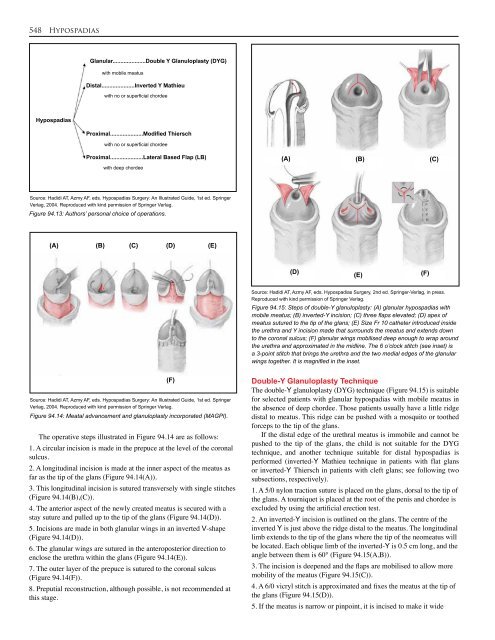

![Clubfoot: Ponseti Management [Vietnamese] - Global HELP](https://img.yumpu.com/51276842/1/184x260/clubfoot-ponseti-management-vietnamese-global-help.jpg?quality=85)
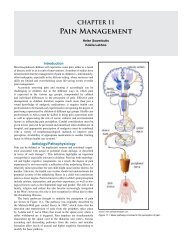

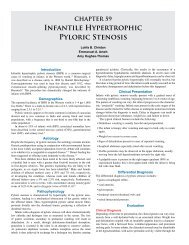
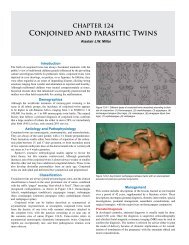
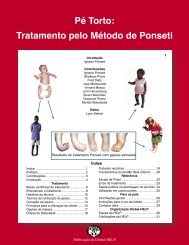
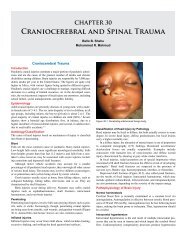

![Steenbeek Brace For Clubfoot [2nd Edition] - Global HELP](https://img.yumpu.com/46612972/1/190x245/steenbeek-brace-for-clubfoot-2nd-edition-global-help.jpg?quality=85)

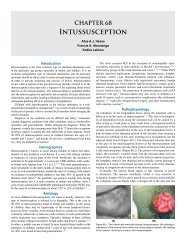

![Basics Of Wound Care [Indonesia] - Global HELP](https://img.yumpu.com/41566370/1/190x245/basics-of-wound-care-indonesia-global-help.jpg?quality=85)
